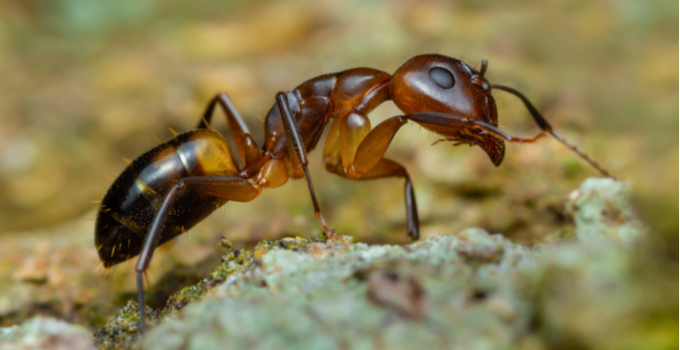Most of us have experienced the displeasure of watching ants track across our walls, doorsteps, and countertops. We’re no exception, but there’s a good reason why these insects tend to invite themselves into homes all around the world. Here we’re going to discuss the Argentinean ant and what you can do about it.
Argentinean Ants
Argentinean ants are approximately half a centimeter long and light brown in color. You’ve likely seen them swarming over crumbs or scraps of food in public places or near your home. They stay relatively close to their colonies but can travel 100s of feet from their nests, where they can be found on the pavement, in piles of debris, or higher up on plants, trees, and rooves.
While these pests can indirectly cause health issues by wandering through garbage or unsanitary terrain and contaminating any food they come into contact with, they do not possess stingers. Their bite typically causes only mild irritation.
Argentinean ants are known worldwide for their vast colonies that can stretch for literally thousands of miles. They consist of workers and a queen and are always on the hunt for food. Originally from South America, these insects have become globally recognized as invasive pests.
Argentinean Ants in Southern California
Initially, these ants were discovered in Northern Argentina. However, they’ve found their way into multiple other countries and continents over time. They inhabit the southern portions and nearly the entire coastline of California. Rotting wood, mulch, pine, straw, compost, and leaves offer popular nesting sites for these ants.
Argentinean ants can tolerate a moderate range of climates but favor the warm weather of Southern California, wherein their colonies tend to multiply. During colder weather or rainy seasons, they seek shelter indoors, where their numbers tend to decrease until their population peaks again in the summer. These insects traditionally feed in trees and bushes, looking for sugar-rich plant life such as sap and honeydew.
Potted plants that contain moist soil or cracks in the exterior of a structure that allows entry are good places to inspect if you think you have an infestation.
How to Avoid Argentinean Ants
Unfortunately, Argentinean ants don’t have any natural threats, like predators, that help moderate their population and impact the surrounding ecosystem. Preventative measures can be taken by keeping your lawn and gardens well-trimmed and swept. Avoiding physical contact between vegetation and the structure in question is recommended.
Clearing debris from your roof and gutters is also advised. While keeping a tidy house and garden can help deter infestation, additional chemical-based solutions are usually necessary if you want to stay ant-free. Because these pests are highly resilient and because of the enormous size of their colonies, they can be quite challenging to eliminate.
Professional services specialize in understanding these pests. We can help you terminate the current residing ants, take measures to prevent an infestation from reoccurring, and offer simple and easy things you can do yourself to get them out and keep them out.
Professional Services as a Solution
O’Connor has over 60 years of experience in the extermination business, and we offer affordable solutions for all of your pest issues. Treating homes and businesses with friendly and reliable service has earned our name a great deal of trust by California locals.
Some of the services we offer include Eco Smart Products for ant control, commercial pest and termite control, and residential pest control. If you’re struggling with uninvited guests, don’t hesitate to call us. You can get in contact with us through our web page or call us now at (800) 284-7985 to schedule a free inspection.
How Are Argentinean Ants Different from Other Ants Pest Control in Ventura CA?
Serving Ventura County | Santa Barbara County

